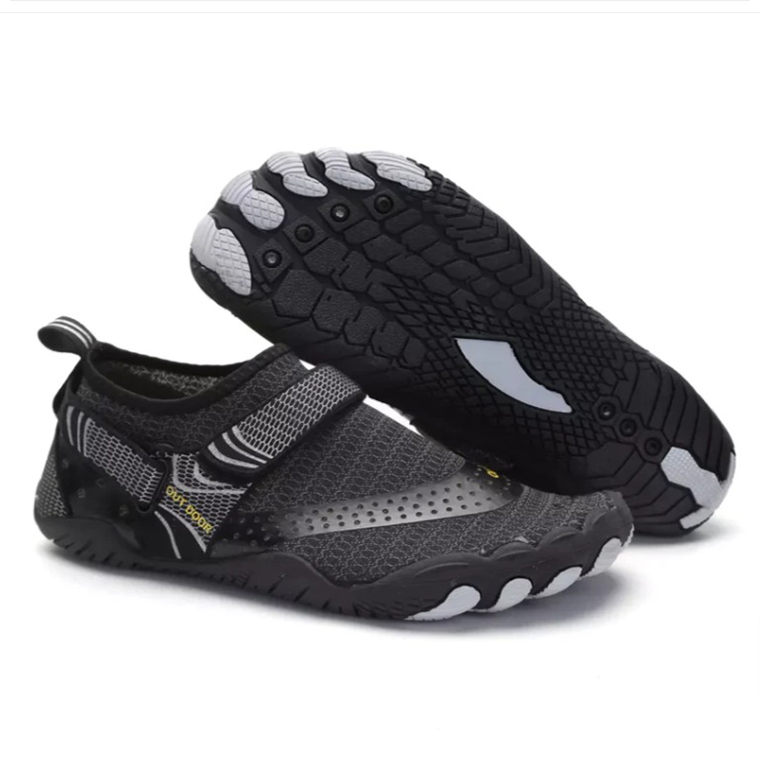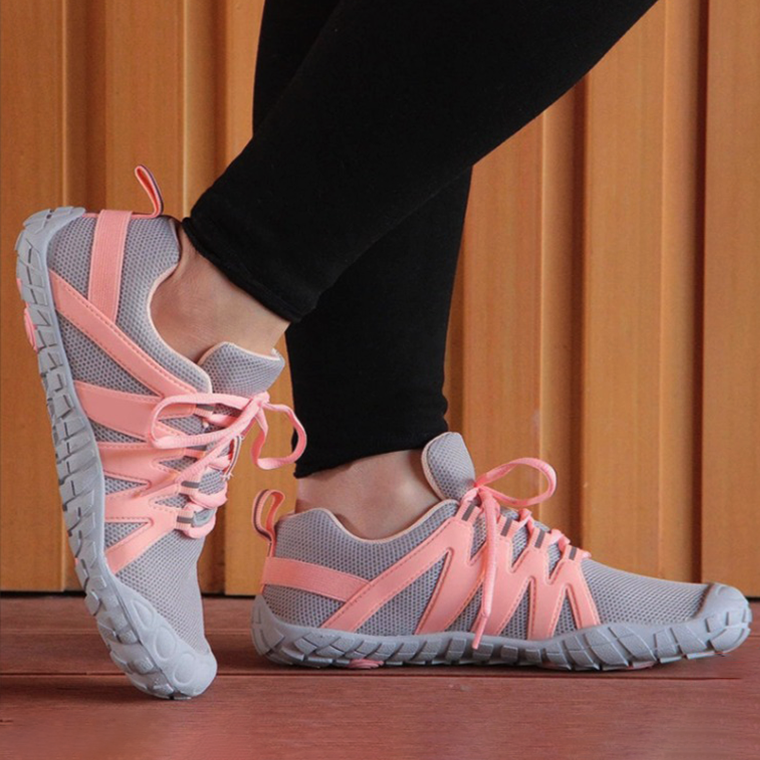In today's world, we tend to prioritize fashion over comfort, and our feet are no exception. We cram them into tight and uncomfortable shoes, causing all sorts of problems. However, there is a new trend that is starting to gain popularity, and for good reason: barefoot shoes.
1. Introduction: The impact of the best Barefoot shoes on foot health
In recent years, there has been a growing movement towards embracing barefoot shoes as a means of promoting optimal foot health. These shoes, also known as minimalist shoes, are designed to mimic the feeling of walking barefoot while still providing some degree of protection and support.
Traditionally, shoes have been designed with thick, cushioned soles and rigid structures aimed at providing maximum comfort and protection.
Barefoot shoes, on the other hand, offer a revolutionary approach to footwear. By incorporating a thin, flexible sole and a wide toe box, they allow the foot to move, flex, and engage in a more natural way.
2. Improved biomechanics
Barefoot shoes, also known as minimalist shoes, have gained significant popularity in recent years for their ability to promote proper foot alignment and improve biomechanics. Unlike traditional shoes with thick soles and restrictive designs, barefoot shoes allow the foot to move naturally and engage the muscles and ligaments that support proper foot alignment.
One of the key benefits of barefoot shoes is that they encourage a more natural gait pattern. When wearing traditional shoes, our feet are often constrained, leading to a compromised walking or running technique.
3. Strengthening foot muscles
Wearing traditional shoes with cushioned soles and rigid structures can often lead to the weakening of foot muscles. These shoes provide excessive support, which means that our foot muscles don't have to work as hard to maintain stability and balance. As a result, these muscles become underutilized and gradually weaken over time.
However, embracing barefoot shoes can help activate and strengthen these neglected foot muscles. Barefoot shoes are designed to mimic the feeling of walking barefoot, allowing your feet to move more naturally and engage the muscles that have been dormant.
By regularly wearing barefoot shoes, you are essentially giving your foot muscles a workout. Just like any other muscle in our body, the more you use and strengthen them, the stronger and more resilient they become.
4. Enhanced proprioception
Proprioception refers to the ability to sense the position, movement, and orientation of our body parts. It plays a vital role in maintaining balance, coordinating movements, and preventing injuries. Traditional shoes with thick soles and elevated heels can hinder our natural proprioceptive abilities, as they create a barrier between our feet and the ground.
In contrast, barefoot shoes feature a minimalistic design that allows for direct contact between the feet and the ground. This direct sensory feedback helps to stimulate the nerve endings in our feet, enhancing our proprioceptive abilities.
When wearing mens barefoot running shoes, the feet are better able to adapt to uneven surfaces, adjusting their position and distributing weight accordingly.
5. Reduced risk of foot injuries
Traditional shoes often restrict the natural movement of our feet, leading to weakened muscles and ligaments. This can increase the likelihood of developing conditions such as plantar fasciitis, Achilles tendonitis, and bunions. However, barefoot shoes mimic the feeling of walking barefoot while providing a protective layer against rough surfaces.
By allowing our feet to move freely and naturally, barefoot shoes encourage proper alignment and strengthen the muscles in our feet and ankles. This, in turn, helps to improve balance and stability, reducing the risk of sprains and fractures.
Furthermore, barefoot shoes promote a healthier gait pattern by encouraging a forefoot or midfoot strike when walking or running.
Another benefit of mens barefoot running shoes is their minimalistic design, which allows for better proprioception.
6. Natural arch support
When it comes to maintaining healthy arches, barefoot shoes play a crucial role. Unlike traditional shoes with rigid arch support, barefoot shoes allow your feet to move naturally and strengthen the muscles in your arches.
By wearing barefoot shoes, you allow your arches to engage in their natural range of motion, promoting proper alignment and balance. As a result, this can lead to improved foot strength and overall foot health.
Additionally, barefoot shoes encourage a healthier foot strike pattern.
7. Increased sensory feedback
With their minimalistic design and thin soles, barefoot shoes provide a more direct connection to the ground. This means that as you walk, run, or engage in any activity, you can feel the texture and contours beneath your feet. The sensory feedback you receive is unparalleled, allowing your feet to better understand and respond to the environment.
This increased tactile perception offers numerous benefits for foot health. By being more aware of the ground beneath you, you can adjust your movements and stride accordingly, reducing the risk of injury.
Furthermore, increased sensory feedback enhances balance and proprioception.
8. Improved posture and alignment
Traditional shoes, with their elevated heels and cushioned soles, can disrupt the natural alignment of our bodies, leading to issues such as back pain, poor posture, and joint problems.
In contrast, barefoot shoes are designed to mimic the feeling of walking barefoot, allowing our feet to move and function as nature intended. By providing a minimal amount of cushioning and support, these shoes encourage our feet to engage the muscles and joints that are often neglected when wearing traditional footwear.
By embracing barefoot shoes and allowing our feet to move and function naturally, we can experience the benefits of improved posture and overall body alignment. Not only can this enhance our foot health, but it can also have a positive impact on our overall well-being and quality of life.
9. Better natural foot function
Our feet are designed to function in a specific way, with each step involving a complex interplay of muscles, tendons, and bones. Traditional shoes, with their rigid soles and narrow toe boxes, often restrict this natural movement, leading to a host of foot problems.
However, barefoot shoes are specifically designed to provide the closest experience to walking barefoot while still offering some protection from the elements. They feature thin and flexible soles that allow your feet to move naturally and adapt to various terrains. This encourages a healthier gait by promoting proper alignment and posture.
When you wear barefoot shoes, you activate the muscles in your feet and lower legs that are often underutilized in traditional footwear. These shoes encourage a more natural foot strike pattern, promoting a mid-foot or forefoot strike rather than a heel strike.
10. Versatility and style
Gone are the days when barefoot shoes were limited to a single style or purpose. As the popularity of barefoot shoes continues to rise, so does the variety available to consumers. Whether you're looking for a sleek and professional pair for the office, a rugged and durable option for outdoor adventures, or a stylish and trendy design for a night out, there is a barefoot shoe to suit every occasion and aesthetic.
One of the most compelling reasons to embrace barefoot shoes is the versatility they offer. No longer do you have to sacrifice style for comfort or functionality.
Conclusion
In conclusion, embracing barefoot shoes is not just a trendy fad, but a decision that can have a profound impact on your foot health and overall well-being. By allowing your feet to move and function naturally, barefoot shoes provide a multitude of benefits that traditional footwear often fails to deliver. If you are looking for the best barefoot shoes, try Andune. It is a brand that specializes in barefoot training shoes, and choosing them for your barefoot training needs may offer several benefits.



